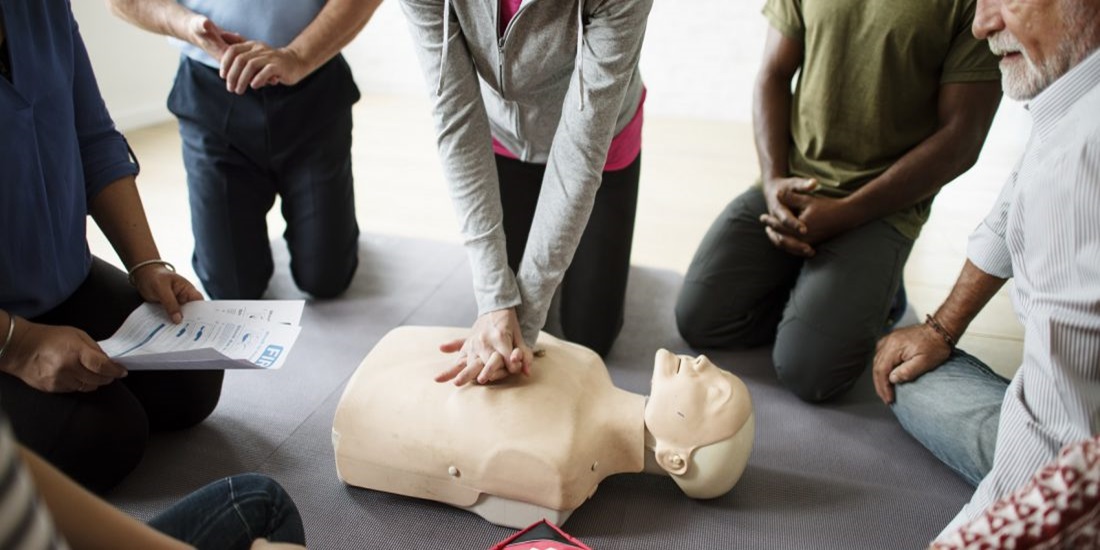Learning first aid is an important skill that gives people the power to handle emergencies well and help others right away before professional medical help comes. With various courses available, selecting the right one can be overwhelming. Whether you’re looking to become certified for your job, ensure your family’s safety, or meet personal goals, understanding what to look for in a first aid course is essential. Here’s a comprehensive guide on how to choose the right first-aid course for your needs.
- Assess Your Needs and Objectives
Before enrolling in any course, it’s vital to evaluate your specific needs and objectives. Are you seeking first aid training gold coast for professional reasons, such as compliance with workplace safety regulations? Or are you interested in acquiring skills for personal use, such as caring for your children or managing emergencies while camping?
Professional Requirements: Many workplaces, particularly those in high-risk industries such as construction or healthcare, require employees to be certified in first aid. If this is what you want to do, make sure the course meets the rules and standards of your business.
Personal Safety: If you want to be ready for everyday situations, you might want to look into classes that teach a lot of different things, like CPR, choking, and basic trauma care. To feel more confident in real life, look for classes that give you training you can use right away.
- Check Course Content and Certification
Not all first aid courses are created equal. Different programs may offer varying content and certifications, so it’s essential to review the course syllabus and certification details.
Course Content: A comprehensive first aid course should cover essential skills such as CPR (Cardiopulmonary Resuscitation), AED (Automated External Defibrillator) usage, wound care, and treatment for shock and choking. Some courses may also include advanced topics like first aid for specific injuries or illnesses, including burns and fractures.
Certification: Ensure the course you choose offers a recognised certification. Certification from reputable organisations like the Australian Red Cross or St John Ambulance can be advantageous, particularly if you need it for professional or regulatory purposes.
- Consider the Course Format and Duration
First aid courses are available in various formats, including in-person classes, online modules, or a combination of both. Each format has its benefits and considerations.
In-Person Classes: These provide hands-on experience and direct interaction with instructors, which is crucial for mastering practical skills. They are often recommended for those who prefer face-to-face learning and immediate feedback.
Online Courses: These offer flexibility and convenience, allowing you to complete the training at your own pace. However, they may lack the hands-on practice and immediate instructor support found in in-person classes. Ensure that the online course includes practical assessments or simulations.
Hybrid Courses: Some programs combine online theory with in-person practical sessions, offering the best of both worlds. This format allows you to study at your convenience while still receiving hands-on practice.
- Evaluate the Instructor’s Qualifications
How well your training works depends a lot on how qualified and experienced the teacher is. Ensure the instructor is certified and experienced in teaching first aid. Look for instructors with a background in emergency medical services, nursing, or related fields.
A good instructor should be able to explain concepts clearly, demonstrate techniques effectively, and provide real-world examples. Their ability to engage students and answer questions is crucial for a valuable learning experience.
- Look for Reviews and Recommendations
Researching reviews and recommendations from past students can provide insight into the quality of the course and the instructor. Online reviews, testimonials, and word-of-mouth recommendations from friends or colleagues can help you gauge the course’s reputation.
Pay attention to feedback about the course content, teaching methods, and overall experience. Positive reviews from individuals with similar goals or needs can be particularly helpful in making your decision.
- Compare Costs and Value
Cost is a significant factor when choosing a first aid course. While it’s tempting to look for the first aid course option, consider the value and quality of the training you will receive. A lower-cost course might not offer the comprehensive training or certification you need.
Budget vs. Quality: Compare the costs of different courses, but don’t sacrifice quality for a lower price. Sometimes, paying a bit more for a reputable course can provide better training and certification. Look for courses that offer good value for money, including practical experience and a recognised certification.
Additional Costs: Be aware of any additional costs, such as materials, certification fees, or renewal fees. These things can add up and change how much the lesson costs altogether.
- Ensure Flexibility and Convenience
Choose a course that fits your schedule and location. Flexibility is important, especially if you have a busy lifestyle or specific time constraints.
Scheduling: Look for courses that offer multiple scheduling options, including evenings or weekends. This can make it easier to fit training into your schedule.
Location: Consider the location of in-person classes. Choose a course that is conveniently located or offers online options if travelling to a physical location is challenging.
- Verify the Course’s Recognition
Make sure that the training is approved by a reputable group. Accreditation can validate the quality of the training and the credibility of the certification. Check if the course provider is recognised by national or regional first aid organisations.
Industry Standards: For professional requirements, verify that the course meets industry standards and is recognised by relevant authorities or regulatory bodies.
Certification Validity: Check the validity period of the certification and the process for renewal. Some certifications require periodic refresher courses or recertification.
- Review the Course Delivery Methods
The method of course delivery can significantly impact your learning experience. Ensure the delivery methods align with your learning preferences and needs.
Interactive Learning: Courses that include interactive elements, such as role-playing scenarios or practical exercises, can enhance your learning and retention of first aid skills.
Practical Assessments: Look for courses that include practical assessments or hands-on practice. This is crucial for mastering first aid techniques and building confidence in applying them during emergencies.
- Seek Support and Resources
A good first aid course should provide adequate support and resources to help you succeed. This includes access to instructional materials, practice resources, and support from instructors.
Materials: Check if the course provides materials such as manuals, handouts, or access to online resources. These can be valuable for reviewing concepts and practising skills.
Instructor Support: Ensure that the course offers support from instructors, including the ability to ask questions and receive feedback. This can enhance your learning experience and help you address any difficulties you may encounter.
Conclusion
Choosing the right first aid course involves careful consideration of your needs, the course content, the qualifications of the instructor, and the overall value of the training. While finding the first aid course cheapest option may be appealing, it’s important to balance cost with the quality of training and certification you will receive. Prioritise a course that offers comprehensive first-aid training, practical experience, and a recognised certification to ensure you are well-prepared to handle emergencies effectively.

 Join Daily Trust WhatsApp Community For Quick Access To News and Happenings Around You.
Join Daily Trust WhatsApp Community For Quick Access To News and Happenings Around You.


